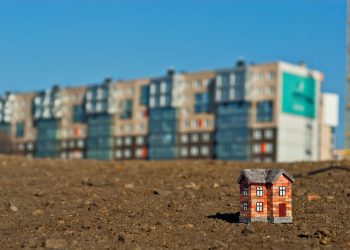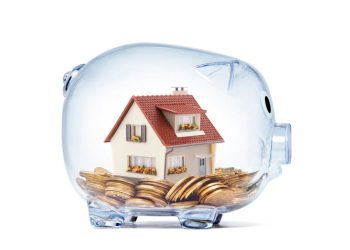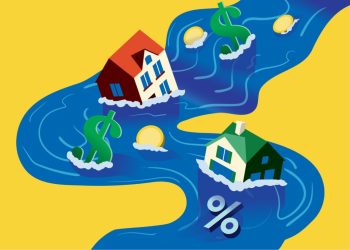After lackluster growth in the housing market throughout most of this past summer, the season ended in August with a significant spike in new home sales and moderate gains in price.
The monthly new residential sales report—released by the U.S. Census Bureau and Department of Housing and Urban Development (HUD)—reports that about 800,000 new single-family homes were sold throughout August, a notable 20.5% increase from July’s estimate of 664,000. August’s results are also much greater than last year’s rate of new home sales, about 15.4% above the 2024 estimate of 693,000.
In a statement, Realtor.com® Senior Economist Anthony Smith described the surge in new homes sales as breaking out of their summer slump and, “marking the strongest pace of 2025 so far.”
Given the increase in new home sales, it’s no surprise that the month ended with a lower estimate of for-sale inventory at 490,000, a 1.4% decrease from July’s estimate of 497,000. The number of homes for sale also represents a 7.4 month supply, a 17.8% reduction to July’s estimate of nine months and a 9.8% drop year-over-year.
“The supply of new homes tightened notably as buyers stepped back into the market,” Smith said. He notes that while the month’s supply dropped from July and one year earlier, it still remains a well-supplied market but less so than earlier in the summer.
“By construction stage, about one in five homes for sale have not yet been started, while the share of completed homes, at roughly one quarter, continues trending toward pre-pandemic norms, giving shoppers more move-in-ready choices,” he said.
Despite the reduced inventory, Chairman of the National Association of Home Builders (NAHB) Buddy Hughes commented in a statement that, “(w)hile this month’s figure may be subject to downward revision, we do expect a general improvement in sales over the coming months, supported by the recent decline in mortgage rates.”
The report estimates that the median sales price of new homes sold in August was about $413,500, a 4.7% increase from July’s price of $395,100 and almost 2% higher year-over-year.
“The gap between median price of existing homes and new homes is closing, with resale homes now selling for roughly $8,900 more than new construction,” Smith said. “Builders remain more willing than individual sellers to adjust prices, but even with these concessions, the market is still gauging how much demand can be coaxed back.”
In wake of the Federal Reserve’s (Fed) decision to cut back on interest rates down to 4% – 4.25%, experts speculate that the market will have more demand in the coming future.
Jing Fu, NAHB’s senior director of forecasting and analysis, said in a statement, “According to Freddie Mac, the average 30-year fixed mortgage rate has declined by 32 basis points over the past four weeks and now sits at 6.26%—its lowest level since early October 2024.”
“This downward trend in rates, combined with the recent Fed interest rate cut, signals a positive outlook for future housing demand. If this momentum continues, we expect new home sales to gain traction as more buyers reenter the market in the final quarter of 2025,” she said.
With September’s 30% hike in mortgage applications and broker confidence slowly rising, August’s strong rebound in sales provides more “welcome momentum heading into the fall selling season,” Smith said.
“Builders enter autumn with a leaner stock of unsold homes and a healthier sales pace, but they remain mindful of affordability constraints despite some easing in mortgage rates,” he added. “Maintaining balance, by starting enough homes to meet demand without over-committing, will be key as they plan new projects for late 2025 and early 2026.”
Regional breakdown
While the number of new privately-owned homes sold and for sale decreased slightly nationwide, each region had moderate to significant growth in homes sold throughout August.
All four regions had positive monthly growth, with the Northeast beating out all others at a notable seasonally adjusted 72.2% increase from July to August. Northeastern markets also increased year-over-year by nearly 41%.
Falling far behind the Northeast, the South had the next highest growth at 24.7% on a monthly basis. Its year-over-year change was lesser than its monthly change, but still a notable 21% increase.
At almost half that of the South, the Midwest had a 12.7% seasonally adjusted increase from July to August. The year-over-year change was slightly higher at a seasonally adjusted rate of 20.3%.
With the lowest change on both a monthly and yearly basis, Western markets had a 5.6% increase in homes sold month-over-month. It was the only region to experience a drop on a yearly basis however, at a seasonally adjusted decrease of 5.7%.
For the full report, click here.











